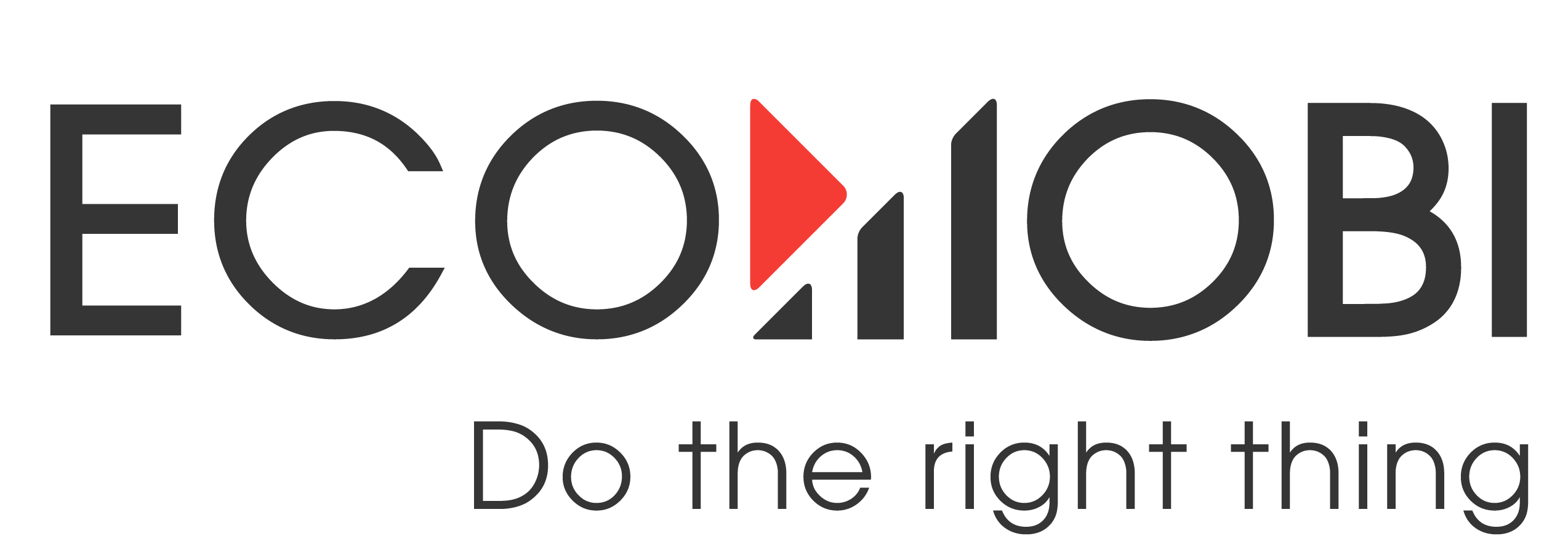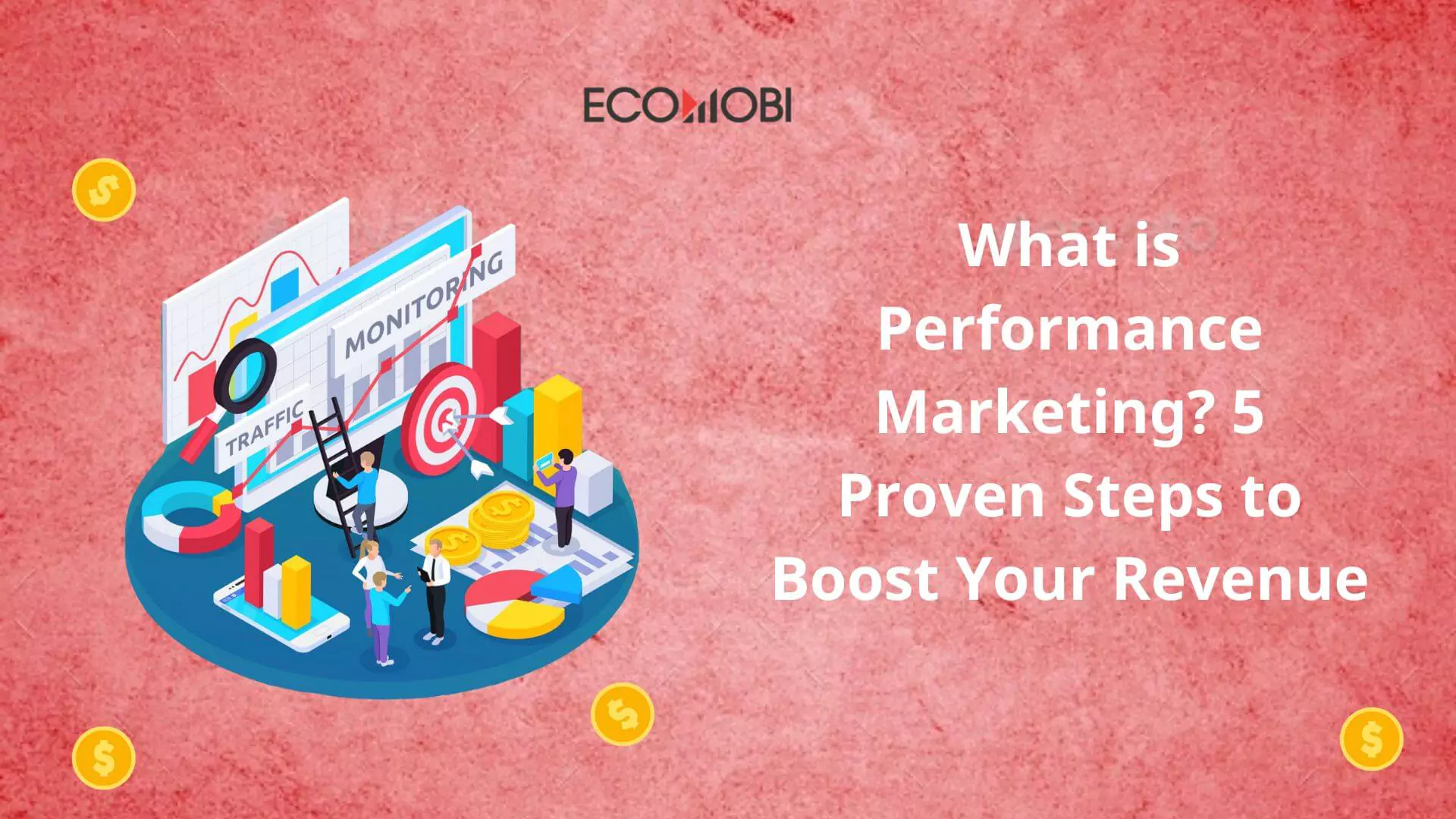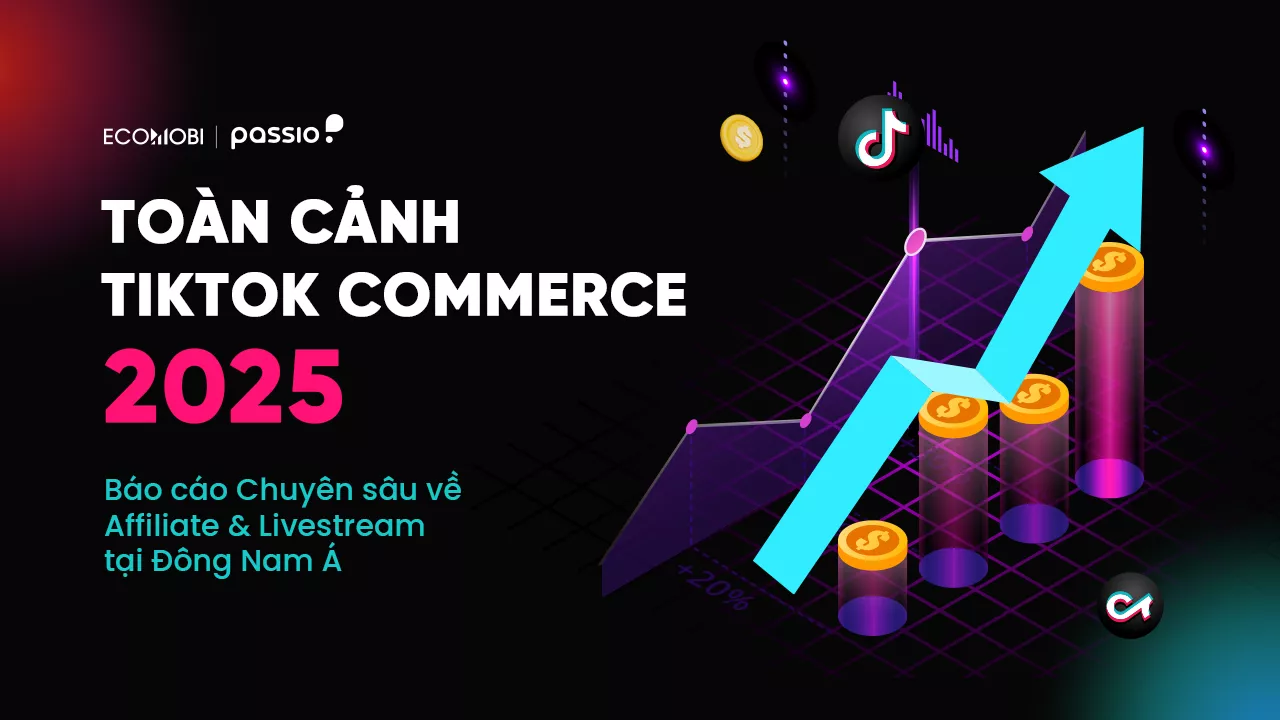Performance Marketing là một loại hình tiếp thị số mà trong đó các thương hiệu chỉ trả tiền cho đơn vị cung cấp dịch vụ khi đạt được những mục tiêu kinh doanh cụ thể hoặc hoàn thành các hành động nhất định. Các hành động này có thể bao gồm lượt nhấp, tạo khách hàng tiềm năng, hoặc doanh số bán hàng. Đơn giản hơn, đây là một hình thức tiếp thị dựa trên kết quả đạt được trong thực tế.
Bạn đã sẵn sàng khám phá bí quyết kiếm tiền này chưa? Hãy cùng Ecomobi tìm hiểu Performance Marketing là gì và làm thế nào bạn cũng có thể tham gia và trở thành một KOL thành công!
Performance Marketing là gì?
Performance Marketing là một mô hình tiếp thị số tập trung vào việc đo lường và tối ưu hóa hiệu suất của các hoạt động marketing. Trong mô hình này, các đơn vị cung cấp dịch vụ chỉ được thanh toán khi hoàn thành một công việc cụ thể, chẳng hạn như nhấp chuột vào đường link, mua hàng, hay đăng ký dịch vụ.
Performance Marketing tập trung vào việc nâng cao hiệu quả quảng cáo và tiếp thị bằng cách nhắm đến các hành động cụ thể, phù hợp với mục tiêu kinh doanh. Doanh nghiệp thường đặt ra các mục tiêu hành động như số lượt truy cập trang web, số lần tải ứng dụng, lượng giao dịch hoặc số lượt đăng ký mới. Chiến dịch tiếp thị sau đó được thiết kế để thúc đẩy các hành động này và được đánh giá thông qua các chỉ số nhằm đo lường hiệu quả chiến dịch.
Được xem như một phân nhánh của Digital Marketing, Performance Marketing còn được biết đến rộng rãi là hình thức tiếp thị dựa trên kết quả. Các chuyên gia trong lĩnh vực này bao gồm các đại lý, các Affiliate network, và nhà xuất bản, những người tập trung chủ yếu vào các kênh mạng xã hội để đạt được các mục tiêu đề ra.
Performance Marketing hoạt động thế nào?
Performance Marketing liên quan đến 4 nhóm đối tượng chính, mỗi nhóm đóng góp một vai trò quan trọng giúp chiến dịch đạt mục tiêu cuối cùng.

Retailers và Merchants
Với Performance Marketing, các nhà bán lẻ và doanh nghiệp thương mại điện tử thường đóng vai trò quảng cáo sản phẩm và dịch vụ của mình, thông qua sự hợp tác với các đối tác như affiliates hoặc publishers. Các ngành hàng đa dạng, từ thời trang, thực phẩm, đến chăm sóc sức khỏe và thể thao, đều có thể tận dụng phương pháp này để tiếp cận hiệu quả hơn với khách hàng. Ngày nay, khách hàng đang dần trở nên tin tưởng hơn vào những đánh giá từ các nguồn uy tín, như các influencers hoặc các publishers đáng tin cậy.
Affiliates và Publishers
Affiliates hoặc Publishers, còn được gọi là “đối tác tiếp thị,” là những người quảng bá sản phẩm hoặc thương hiệu của doanh nghiệp và nhận hoa hồng khi giới thiệu thành công. Có nhiều loại đối tác khác nhau, bao gồm các trang đánh giá sản phẩm, blog, tạp chí trực tuyến.
Influencers cũng là một loại publisher, sử dụng nền tảng blog hoặc mạng xã hội để quảng bá sản phẩm, chia sẻ trải nghiệm cá nhân, đưa ra hướng dẫn, đánh giá đáng tin cậy kèm các khuyến mãi nhằm tăng tính tương tác với người theo dõi.
Affiliate Network và Third-Party tracking platform
Các Affiliate Networks và nền tảng theo dõi của bên thứ ba thường đóng vai trò như cầu nối giữa doanh nghiệp và đối tác tiếp thị, đảm nhận các nhiệm vụ như:
- Cung cấp công cụ quảng bá như banner và nội dung để hỗ trợ quảng cáo sản phẩm và dịch vũ cho các nhãn hàng.
- Theo dõi và quản lý các thông tin quan trọng như lượt click, tỷ lệ chuyển đổi nhằm đánh giá sự hiệu quả của chiến dịch.
- Hỗ trợ thanh toán hoa hồng và tiền thưởng cho đối tác một cách minh bạch, đóng vai trò tương tự như ngân hàng trong xử lý giao dịch.
- Giải quyết các vấn đề phát sinh, bảo đảm tính minh bạch và công bằng trong quy trình hợp tác.
Affiliate Managers và OPMs (Outsourced Program Management Companies)
Hiện nay, có rất nhiều doanh nghiệp và dịch vụ chuyên quản lý đối tác chuyên biệt. Đội ngũ chuyên môn của họ có thể đưa ra các chiến lược quảng cáo, công cụ và từ khóa phù hợp, đồng thời xử lý các trục trặc về kỹ thuật. Doanh nghiệp cũng có thể thuê các agency quản lý chương trình liên kết hoặc hỗ trợ đội ngũ nội bộ, tận dụng chuyên môn và mạng lưới rộng lớn của họ để tối ưu hóa hiệu quả chương trình.
Vai trò của Performance Marketing trong thời đại công nghệ số
Trong thời đại kỹ thuật số, Performance Marketing đóng vai trò là một phương pháp tiếp cận hiệu quả và sáng tạo, hỗ trợ doanh nghiệp mở rộng phạm vi ảnh hưởng và thu thập dữ liệu giá trị từ các nhóm đối tượng đa dạng. Những vai trò chính của tiếp thị dựa trên hiệu suất trong thời kỳ công nghệ hiện nay gồm:

Đo lường hiệu quả chiến dịch
Performance Marketing cho phép các nhà sáng tạo công cụ để đo lường hiệu quả tiếp thị với độ chính xác cao. Các chỉ số như tỷ lệ chuyển đổi, CPA, và tỷ suất lợi nhuận trên hành động (ROAS) cho phép nhà tiếp thị đánh giá thành công của chiến dịch và nhanh chóng điều chỉnh chiến lược nếu cần thiết.
Tối đa hóa Return on Investment (ROI)
Performance Marketing sẽ hỗ trợ doanh nghiệp tối ưu hóa ROI từ các chiến dịch tiếp thị của mình. Nhờ khả năng đo lường và phân tích chi tiết, doanh nghiệp dễ dàng điều chỉnh để đạt được mức lợi nhuận mong muốn từ các khoản đầu tư vào quảng cáo thông qua việc tập trung vào một mục tiêu cụ thể.
Nâng cao tương tác và cá nhân hóa trải nghiệm của khách hàng
Performance Marketing tạo điều kiện cho doanh nghiệp hướng đến các mục tiêu như tăng doanh thu, thúc đẩy traffic website, và tăng cường tương tác với khách hàng trên mạng xã hội. Với khả năng đo lường hiệu quả, các chiến dịch có thể được tối ưu hóa để phục vụ tốt hơn nhu cầu của khách hàng, mang lại hiệu quả cao hơn trong tương tác.
Bằng cách xác định đúng đối tượng và quản lý chiến dịch hiệu quả, doanh nghiệp có thể tăng cường sự tương tác và tối ưu hóa hiệu suất chiến dịch. Performance Marketing mang lại khả năng cá nhân hóa trải nghiệm khách hàng nhờ vào việc nhắm đến các nhóm đối tượng cụ thể. Những kỹ thuật như tiếp thị lại, quảng cáo tùy chỉnh, và phân khúc khách hàng giúp doanh nghiệp xây dựng mối quan hệ sâu sắc hơn với khách hàng thông qua trải nghiệm phù hợp và thu hút.
Tối ưu hóa chi phí
Thông qua việc tập trung vào các kênh và chiến dịch có hiệu suất cao nhất, Performance Marketing giúp doanh nghiệp quản lý chi phí quảng cáo tối ưu hơn. Nhờ các công cụ theo dõi và đo lường chi tiết, các marketer có thể phân chia ngân sách một cách hợp lý, tập trung nguồn lực vào các kênh mang lại hiệu quả tốt nhất.
Các chỉ số nổi bật để đo lường hiệu quả của Performance Marketing
CPC (Cost Per Click)
CPC là mức chi phí mà doanh nghiệp phải chi trả mỗi khi có người nhấp vào quảng cáo của họ. CPC cao thường cho thấy khả năng chuyển đổi giá trị cao. Nếu mục tiêu chính là tăng traffic cho website, hình thức quảng cáo dựa trên CPC có thể là một lựa chọn phù hợp.
CPM (Cost Per Mile)
CPM, hay chi phí cho mỗi 1.000 lần hiển thị quảng cáo, là chỉ tính phí dựa trên số lần quảng cáo xuất hiện trước người dùng, thay vì hành động họ thực hiện. Cho dù đây là một phương thức truyền thống, nhiều nhà tiếp thị hiện nay ít chú trọng đến CPM và thay vào đó quan tâm đến các chỉ số dựa trên hành động.
CPS (Cost Per Sales)
CPS là chỉ số dùng để đánh giá mức độ hiệu quả của chiến dịch quảng cáo thông qua chi phí cho mỗi giao dịch hoàn tất, giúp doanh nghiệp theo dõi được lợi nhuận từ các hoạt động quảng cáo dựa trên doanh số thực tế.
CPL (Cost Per Lead)
CPL đo lường chi phí để thu hút một khách hàng tiềm năng và là một chỉ số quan trọng trong Performance Marketing. Một CPL thấp cho thấy chiến dịch hiệu quả và tiết kiệm chi phí. Tuy nhiên, mức CPL lý tưởng còn phụ thuộc vào ngành, loại sản phẩm và đối tượng khách hàng cụ thể.
CPA – Giá mỗi chuyển đổi
CPA tính toán hiệu quả của chiến dịch thông qua chi phí cho một hành động cụ thể, như tải ứng dụng, đăng ký, hoặc hoàn thành mua hàng. Trong Performance Marketing, việc khách hàng thực hiện một hành động cụ thể được xem là một kết quả giá trị và dễ đo lường, làm cho CPA trở thành một trong những chỉ số được ưa chuộng và quan trọng.
Để hiểu đầy đủ các chỉ số Performance Marketing này, bạn có thể xem bài đăng này: https://ecomobi.com/ecomobi/vi/hinh-thuc-affiliate-marketing/
5 bước để xây dựng chiến dịch tiếp thị hiệu suất
Bước 1: Xác định mục tiêu của chiến dịch tiếp thị
Bước đầu tiên trong việc xây dựng một chiến dịch Performance Marketing là xác định các mục tiêu một cách chi tiết và rõ ràng. Doanh nghiệp nên áp dụng nguyên tắc SMART – mục tiêu phải cụ thể, có thể đo lường, khả thi, phù hợp và có thời hạn. Một số mục tiêu phổ biến bao gồm:
- Tăng lượng người truy cập website
- Tăng tỷ lệ chuyển đổi
- Thúc đẩy doanh thu
- Nâng cao mức độ nhận diện của thương hiệu
- Gia tăng sự trung thành từ khách hàng
Bước 2: Chọn kênh phù hợp với nội dung và khán giả
Bước tiếp theo là chọn lựa các kênh truyền thông thích hợp cho chiến dịch. Content creator nên đa dạng hóa các kênh để tiếp cận độ phủ sóng cho nội dung của mình thay vì chỉ sử dụng một trang mạng xã hội duy nhất. Để làm được điều này, KOL cần:
- Phân tích đối tượng mục tiêu để hiểu kênh nào sẽ hiệu quả
- Xem xét các yếu tố như ngân sách, phạm vi tiếp cận và khả năng đo lường
- Thử nghiệm trên nhiều kênh để tìm ra kênh mang lại kết quả tốt nhất
Bước 3: Bắt đầu chiến dịch
Ở giai đoạn này, doanh nghiệp cần hiểu rõ đối tượng mà chiến dịch hướng tới, từ đó xây dựng thông điệp và nội dung thu hút. Các công việc cần thực hiện gồm:
- Đặt mục tiêu, phân bổ ngân sách và lựa chọn đối tượng mục tiêu
- Xây dựng nội dung quảng cáo phù hợp với nhu cầu của khách hàng
- Triển khai chiến dịch và theo dõi hiệu suất liên tục
Bước 4: Đo lường và tối ưu hóa chiến dịch
Các chiến dịch Performance Marketing yêu cầu sự theo dõi và tối ưu liên tục đến từ các doanh nghiệp. Nhà tiếp thị nên thường xuyên phân tích các dữ liệu thu thập được để tối ưu hóa chiến dịch và cải thiện kết quả. Các bước bao gồm:
- Đo lường các KPI để theo dõi và đánh giá hiệu suất chiến dịch
- Điều chỉnh các yếu tố cần thiết nhằm tăng hiệu quả
- Thiết lập báo cáo theo dõi tiến trình để dễ dàng quản lý
- Thiết lập báo cáo để theo dõi tiến trình chiến dịch.
Bước 5: Xử lí với các rủi ro tiềm ẩn
Trong bất kỳ chiến dịch tiếp thị nào, rủi ro là yếu tố không thể tránh khỏi, như gian lận, lộ dữ liệu, hay cạnh tranh gay gắt. Do đó, đội ngũ Marketing cần chuẩn bị sẵn kế hoạch để xử lý các rủi ro, bảo vệ hiệu quả chiến dịch và đảm bảo tính an toàn cho doanh nghiệp.
Các hình thức Performance Marketing nổi bật hiện nay
Affiliate Marketing
Affiliate Marketing, hay Tiếp thị liên kết, là một hình thức tiếp thị dựa trên hiệu quả, trong đó các đối tác phân phối (bao gồm Publisher, KOL, hoặc Người sáng tạo nội dung) nhận được tiền thưởng hoặc hoa hồng từ nhà cung cấp (Advertisers) khi hoàn thành các hành động sau:
- Khách hàng nhấp vào liên kết của đối tác để truy cập trang web của nhà cung cấp.
- Khách hàng mua hàng hoặc đăng ký dịch vụ thông qua liên kết của đối tác.
- Khách hàng thực hiện các hành động khác theo yêu cầu của nhà cung cấp.
Nói cách khác, Affiliate Marketing là một phương thức kiếm tiền trực tuyến thông qua việc giới thiệu sản phẩm hoặc dịch vụ của bên thứ ba, trong đó đối tác phân phối đóng vai trò kết nối giữa nhà cung cấp và khách hàng.
Native Advertising
Native Advertising, hay Quảng cáo gốc, là một hình thức quảng cáo trả phí được thiết kế để hòa hợp với nội dung của trang web hoặc ứng dụng nơi nó xuất hiện. Hình thức này thường được thể hiện qua các bài viết tài trợ, bài đăng trong dòng nội dung, quảng cáo đề xuất, hoặc các kiểu nội dung tương tự nhằm đảm bảo trải nghiệm mượt mà cho người dùng.
Ví dụ, khi đọc tin tức, bạn có thể thấy một bài viết tài trợ ở cuối bài, mặc dù được đánh dấu là “quảng cáo” nhưng vẫn giữ phong cách như nội dung gốc, giúp tránh cảm giác gián đoạn cho người đọc.
So với quảng cáo truyền thống như banner, quảng cáo gốc ít gây khó chịu hơn cho người xem và thường mang lại hiệu quả cao hơn nhờ khả năng tiếp cận đúng đối tượng và phù hợp với sở thích người dùng.
Content Marketing
Content Marketing là chiến lược sử dụng các nội dung hấp dẫn để thu hút và chuyển đổi người xem thành người mua hàng. Cách thức thực hiện bao gồm:
- Tạo ra các nội dung có giá trị và phù hợp với nhu cầu của đối tượng mục tiêu, như blog, video, podcast, sách điện tử, tài liệu chuyên sâu, v.v.
- Phân phối nội dung qua các kênh mà khách hàng tiềm năng thường xuyên sử dụng, như website, blog, mạng xã hội, v.v.
- Sử dụng quảng cáo có phí để tăng cường độ phủ sóng của nội dung, từ đó thu hút nhiều lượt truy cập và tăng cơ hội chuyển đổi.
Content Marketing hỗ trợ tất cả các giai đoạn của kênh bán hàng trong Performance Marketing, từ việc thu hút khách hàng tiềm năng đến biến thành người mua thực tế.
Social Media Marketing
Trong Performance Marketing, Social Media Marketing là việc tận dụng các nền tảng như Facebook, Instagram, Twitter để tiếp cận khách hàng tiềm năng và triển khai chiến dịch một cách hiệu quả. Thông qua các nền tảng này, các marketer có thể tương tác trực tiếp với khách hàng và điều chỉnh quảng cáo sao cho phù hợp với từng đối tượng, từ đó nâng cao mức độ tương tác, xây dựng hình ảnh thương hiệu và thúc đẩy doanh thu.
Search Engine Marketing (SEM)
SEM là chiến lược tiếp cận với khách hàng tiềm năng thông qua các quảng cáo trên các công cụ tìm kiếm như Google, Bing, v.v. SEM bao gồm hai loại hình quảng cáo chính: quảng cáo tìm kiếm trả phí (Search Ads) và quảng cáo hiển thị (Display Ads). SEM đóng vai trò quan trọng trong Performance Marketing, giúp gia tăng sự tương tác và tối đa hóa doanh thu.
Ưu điểm và nhược điểm của Performance Marketing
Ưu điểm
- Đo lường hiệu quả rõ ràng: Performance Marketing hỗ trợ doanh nghiệp giám sát và đánh giá kết quả của các chiến dịch một cách hiệu quả và chính xác. Nhờ đó, các chi phí và chiến lược marketing có thể được tối ưu hóa, đảm bảo rằng mọi khoản đầu tư đều tạo ra giá trị cao.
- Chi phí hợp lý: Performance Marketing thường có chi phí thấp hơn so với các hình thức tiếp thị khác vì doanh nghiệp chỉ phải chi trả cho những kết quả thực tế, từ đó giúp họ tập trung vào những chiến dịch và kênh mang lại lợi nhuận cao.
- Khả năng nhắm mục tiêu hiệu quả: Performance Marketing giúp doanh nghiệp hướng các chiến dịch đến đúng đối tượng khách hàng mục tiêu, đảm bảo thông điệp quảng cáo được truyền tải chính xác và hiệu quả, gia tăng tỷ lệ chuyển đổi.
- Tính linh hoạt: Mô hình Performance Marketing phù hợp với nhiều loại hình doanh nghiệp và các mục tiêu marketing đa dạng, mang lại sự linh hoạt trong việc triển khai các chiến lược marketing hiệu quả.
Nhược điểm
- Quá phụ thuộc vào dữ liệu: Performance Marketing yêu cầu phân tích và theo dõi dữ liệu liên tục để tối ưu hóa chiến dịch. Việc thiếu dữ liệu đầy đủ và chính xác có thể khiến các nhà tiếp thị gặp khó khăn trong việc điều chỉnh và đo lường hiệu quả chiến dịch.
- Tập trung vào hành động ngắn hạn: Mô hình này chủ yếu tập trung vào các mục tiêu ngắn hạn như doanh thu tức thì hoặc lượt đăng ký, có thể làm giảm sự chú trọng đến xây dựng mối quan hệ lâu dài với khách hàng.
- Cạnh tranh và chi phí tăng cao: Khi các chiến dịch được xây dựng dựa trên đấu thầu và trả tiền cho mỗi hành động, sự cạnh tranh gia tăng có thể khiến chi phí quảng cáo tăng lên, đặc biệt trong các ngành có mức độ cạnh tranh cao, khiến cho chi phí cho mỗi hành động trở nên đắt đỏ hơn.
Ecomobi – nền tảng Performance Marketing tốt nhất Đông Nam Á dành cho KOLs
Với hơn 6 năm kinh nghiệm, Ecomobi tự hào là nền tảng bán hàng cho người nổi tiếng hàng đầu Đông Nam Á, kết nối hơn 10.000 thương hiệu với hơn 5.000 KOL. Chúng tôi đang tìm kiếm những cá nhân đam mê muốn trở thành KOLs chuyên nghiệp, tạo ra giá trị cho cộng đồng và đối tác.
Tham gia Ecomobi, bạn không chỉ được thỏa mãn đam mê mà còn có cơ hội tăng thu nhập ổn định. Nếu bạn có hơn 10.000 người theo dõi trên Youtube và Instagram hoặc trên 50.000 trên TikTok, hãy để Ecomobi giúp bạn trở thành một KOL chuyên nghiệp. Chúng tôi mang đến nguồn thu nhập thụ động hấp dẫn và cơ hội hợp tác với nhiều thương hiệu lớn.

Ecomobi luôn đặt KOL và Nhà xuất bản làm trọng tâm, cung cấp các chính sách và công cụ hỗ trợ tốt nhất:
- Hoa hồng hấp dẫn: Lên tới 20%, cao nhất thị trường.
- Tiền thưởng giới thiệu: Tiền thưởng cho mỗi lần giới thiệu KOL thành công.
- Hoa hồng mỗi lần nhấp: Tăng thu nhập đa dạng.
- Công nghệ hỗ trợ: AI Chatbot, landing page cá nhân,… giúp tăng lượng người theo dõi nhanh chóng.
- Hỗ trợ tận tình 1:1 để giúp KOL giải quyết mọi vấn đề của họ
Hàng nghìn KOL khác đã thành công với Ecomobi. Còn bạn thì sao? Hãy để Ecomobi giúp bạn tăng thu nhập ngay hôm nay! Đăng ký ngay bây giờ


















